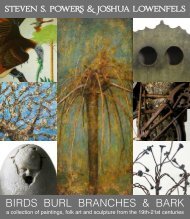SHUT THE DOOR AND LISTEN FROM OUTSIDE
In conjunction with the Outsider Art Fair: New York, we present our Winter 2020 Catalogue, "Shut The Door And Listen From Outside" This 88-page catalog features recent finds in the genres of Outsider and Self-Taught Art with a few additions of related American Folk Art. (Please note that NOT all of these works will be exhibited at The Outsider Art Fair). "Shut The Door And Listen From Outside" is a statement from Oblique Strategies, which is a set of cards each with a suggestion, directive, or constraint created by the artists Brian Eno and Peter Schmidt to encourage lateral thinking and to break creative blocks. With this in mind, as an art dealer or collector, one may think, how will this look if I see it indirectly? From a room away? Through a window? Obscured through a crowd of people? Or as I quickly scroll through Instagram? This question is not a shallow proposition—we often see a particular artwork from an off-angle or perspective—not in optimal presentation. Indeed, if we think about it, we likely first approached an artwork we came to love because it looked good "from outside." It had something special going on from a small section we gleaned through a crowd of people, or the composition came into focus as we came towards it from another room. As an artist, we may interpret this as another way of seeing. To purposely not see clearly or overtly—to create something anew based on partial information or hazy suggestions seen or heard. Or another way to look at a work in progress. View it from the side, across the room, or without glasses to see a fuzzy tonal map—is it still working for you?
In conjunction with the Outsider Art Fair: New York, we present our Winter 2020 Catalogue, "Shut The Door And Listen From Outside" This 88-page catalog features recent finds in the genres of Outsider and Self-Taught Art with a few additions of related American Folk Art. (Please note that NOT all of these works will be exhibited at The Outsider Art Fair).
"Shut The Door And Listen From Outside" is a statement from Oblique Strategies, which is a set of cards each with a suggestion, directive, or constraint created by the artists Brian Eno and Peter Schmidt to encourage lateral thinking and to break creative blocks.
With this in mind, as an art dealer or collector, one may think, how will this look if I see it indirectly? From a room away? Through a window? Obscured through a crowd of people? Or as I quickly scroll through Instagram? This question is not a shallow proposition—we often see a particular artwork from an off-angle or perspective—not in optimal presentation. Indeed, if we think about it, we likely first approached an artwork we came to love because it looked good "from outside." It had something special going on from a small section we gleaned through a crowd of people, or the composition came into focus as we came towards it from another room.
As an artist, we may interpret this as another way of seeing. To purposely not see clearly or overtly—to create something anew based on partial information or hazy suggestions seen or heard. Or another way to look at a work in progress. View it from the side, across the room, or without glasses to see a fuzzy tonal map—is it still working for you?
- No tags were found...
Create successful ePaper yourself
Turn your PDF publications into a flip-book with our unique Google optimized e-Paper software.
Cyanotype of a Cadaver<br />
Unique cyanotype photogram on paper<br />
Circa: 1930-1940<br />
Size: 13 1/2”(w) x 36” (h)<br />
Provenance: Gary Edwards Gallery.<br />
Though created for scientific purposes, this striking image of<br />
the male body with its stark composition and delicate tonal<br />
ranges of cyan has an unintentional air of reverence—a<br />
haunting witness mark—not unlike the Shroud of Turin or a<br />
Buddhist scroll.<br />
This work is part of a small group of cyanotypes by the same<br />
unknown photographer/physician. Others in the series are<br />
held in the collections of MOMA, The Metropolitan Museum,<br />
and The Museum of Fine Arts, Houston.<br />
Reference: Burns and Wilson, Cyanotypes: Photography’s Blue<br />
Period. Worcester Art Museum, 2016, pps.68-71


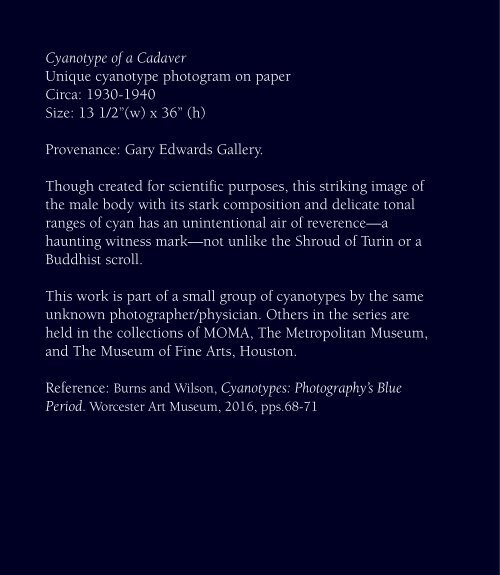

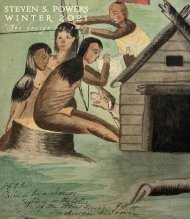
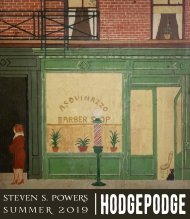
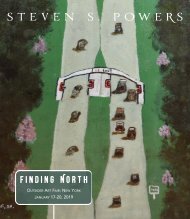

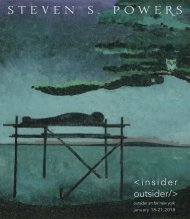
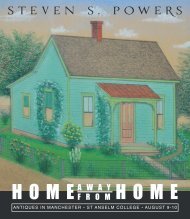
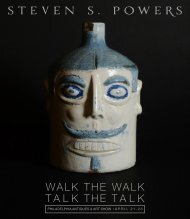
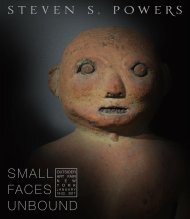

![NEEDLE • KNIFE • TORCH [&] BRUSH](https://img.yumpu.com/55309753/1/190x219/needle-o-knife-o-torch-brush.jpg?quality=85)
